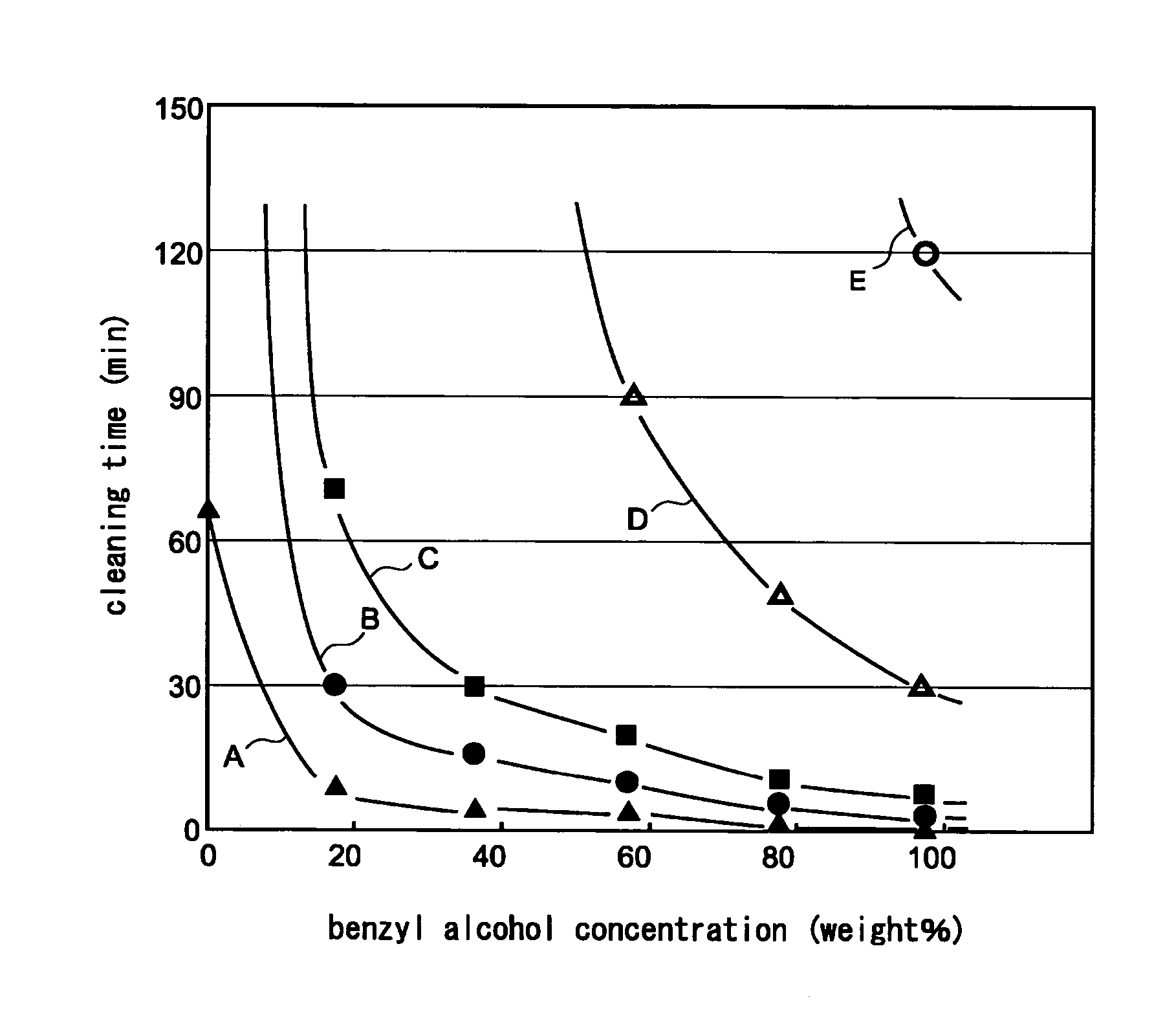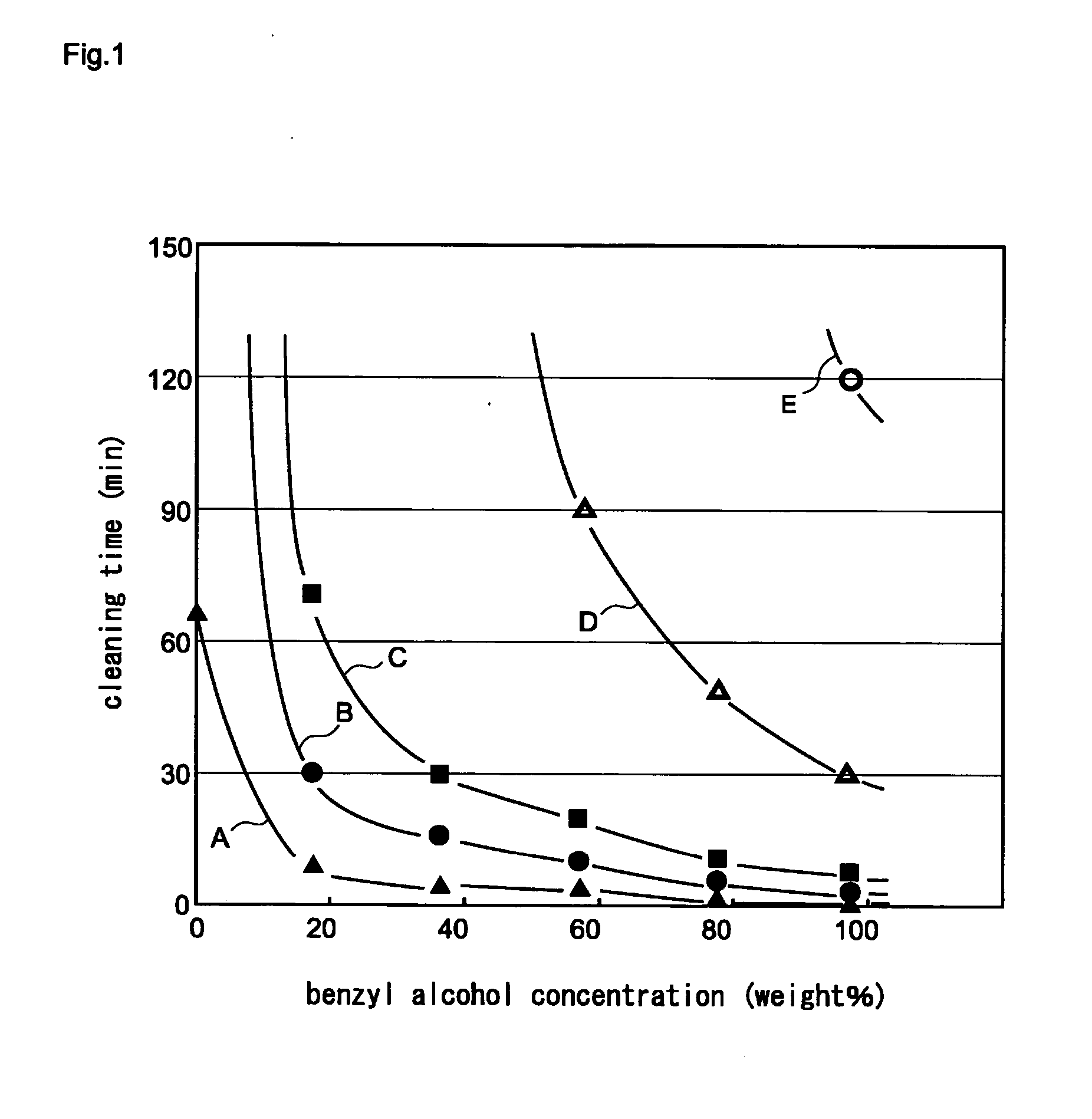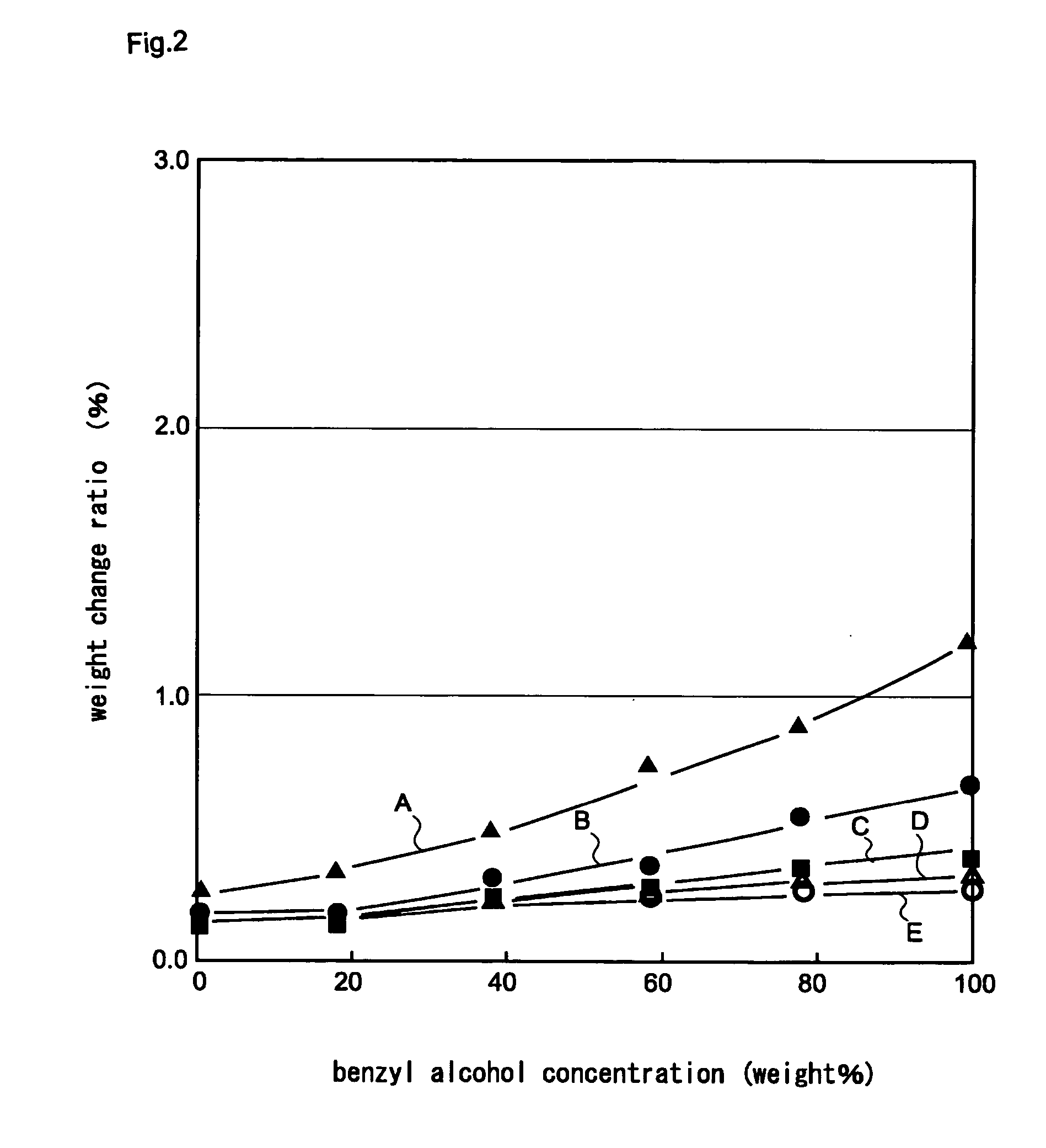Cleaning agent for removing solder flux and method for cleaning solder flux
a cleaning agent and flux technology, applied in the field of cleaning agents for removing solder flux and cleaning methods for cleaning solder flux, can solve the problems of insufficient cleaning property of cleaning agent composite, corroding of cleaning agent composite and epoxy substrates, and forming white residues on polyimide substrates on which solder bumps are formed, etc., to achieve excellent cleaning properties and rinsing properties, enhance electrical neutralizing ability, and enhance saponification reaction and permeability
- Summary
- Abstract
- Description
- Claims
- Application Information
AI Technical Summary
Benefits of technology
Problems solved by technology
Method used
Image
Examples
first embodiment
[0047] The first embodiment is directed to a cleaning agent for removing the solder flux which includes 70 to 99.9 weight % of benzyl alcohol and 0.1 to 30 weight % of amino alcohol with respect to the total amount of the cleaning agent when a glycol compound is below 1 weight % with respect to the total amount of the cleaning agent and the cleaning agent includes 15 and 99 weight % of benzyl alcohol and 0.1 to 30 weight % of amino alcohol with respect to the total amount of the cleaning agent in case that the cleaning agent includes 1 to 40 weight % of the glycol compound with respect to the total amount of the cleaning agent.
[0048] That is, it is difficult to sufficiently clean a lead-free solder flux, a high-melting-point flux or the like which is adhered to a polyimide substrate or the like within a short time when only benzyl alcohol is used. With the addition of given amino alcohol, however, there is no possibility that the rinsing property is degraded and, rather, the rising...
second embodiment
[0104] The second embodiment is directed to a method for cleaning a solder flux which includes a step in which an object to be cleaned to which a solder flux is attached is cleaned using a cleaning agent for removing the solder flux which sets a content of benzyl alcohol to a value which falls within a range of 70 to 99.9 weight % and a content of amino alcohol to a value which falls within a range of 0.1 to 30 weight % when a content of a glycol compound is below 1 weight % with respect to a total amount of the cleaning agent for removing the solder flux, and sets a content of benzyl alcohol to a value which falls within a range of 15 to 99 weight % and a content of amino alcohol to a value which falls within a range of 0.1 to 30 weight % when a content of the glycol compound falls within a range of 1 to 40 weight % with respect to the total amount of the cleaning agent for removing the solder flux; and a rinsing step which rinses the object to be cleaned using an alcoholic solvent...
example 1
1. Adjustment and Evaluation of Cleaning Agent
(1) Electric Conductivity
[0122] The cleaning agents having the compositions of an example 1 shown in Table 1 are adjusted and are measured using an electric conductivity measuring instrument MODEL SC82 (produced by Yokogawa Electric Corp.) under the condition of a temperature of 25° C.
(2) Cleaning Property Evaluation
[0123] Firstly, a solder paste LF Solder TLF-204-85 (produced by Tamura Kaken Co. Ltd.) is printed in a given pattern at a given position of a glass epoxy substrate using a metal mask and the solder paste is made to reflow in a hot plate having a cover at a temperature of 250° C. thus forming a test piece. Then, the test piece is immersed in a beaker of 300 ml which is maintained at a temperature of 70° C. and contains 200 g of cleaning agent therein, wherein the cleaning is performed while agitating the cleaning agent using a magnet stirrer. After cleaning the test piece for a given time, the test piece is taken out f...
PUM
| Property | Measurement | Unit |
|---|---|---|
| electric conductivity | aaaaa | aaaaa |
| relative humidity | aaaaa | aaaaa |
| tan δ | aaaaa | aaaaa |
Abstract
Description
Claims
Application Information
 Login to View More
Login to View More - R&D
- Intellectual Property
- Life Sciences
- Materials
- Tech Scout
- Unparalleled Data Quality
- Higher Quality Content
- 60% Fewer Hallucinations
Browse by: Latest US Patents, China's latest patents, Technical Efficacy Thesaurus, Application Domain, Technology Topic, Popular Technical Reports.
© 2025 PatSnap. All rights reserved.Legal|Privacy policy|Modern Slavery Act Transparency Statement|Sitemap|About US| Contact US: help@patsnap.com



